

Narrative style is the beating heart of writing. While our voice might remain consistent from a blog to a non-fiction to a fiction, narrative style is what keeps our work fresh and makes it resonate.
Developing a strong narrative style is especially critical if we decide to write a memoir because the style will need to not only reflect the personality of the author-storyteller, but also hit that sweet spot in tone that is appropriate for the story.
But what IS IT?
Last post, I opened the discussion about memoirs. Memoirs are not only becoming increasingly popular, but with the implosion of traditional publishing, there’s good news. Anyone can write and publish a memoir. There’s also bad news…anyone can write and publish a memoir.
Before we talk about the various structures and types of memoirs, it’s a good idea to first discuss the broad concepts. Last time, I mentioned that superior memoirs frequently DO reflect The Hero’s Journey.
That was our first meta-concept, so to speak. The second meta-concept is narrative style. This aids us in connecting with audiences and generating long-lasting resonance.
Narrative style can be one of those amorphous concepts that’s tough to define directly. Sort of like black holes.
Scientists don’t per se observe a black hole directly, as much as they suspect they might have a black hole because of what’s going on around a certain area in space (the behavior of light and nearby planets, etc).
This said, all creators would be prudent to keep some core principles in mind when writing anything from a blog, to a non-fiction, to a memoir. These principles lay the foundation for what we think of when it comes to ‘narrative style.’
Narrative Style & The Essentials


It’s just wise to appreciate how the human mind works whenever we’re creating. There are certain aspects hard-coded into the brain. Thus, when we grasp the basics of what hooks readers and what shuts them down, it offers major advantages.
Whether writers want to admit this or not, we are creating a product we hope others will pay to consume. That they not only will consume the product, but then will recommend our product to others.
While developing then strengthening our own unique narrative style will certainly help, it will be simpler to explain the impact of narrative style with some context and basic psychology.
Essential #1: Order
Our brains desire order.
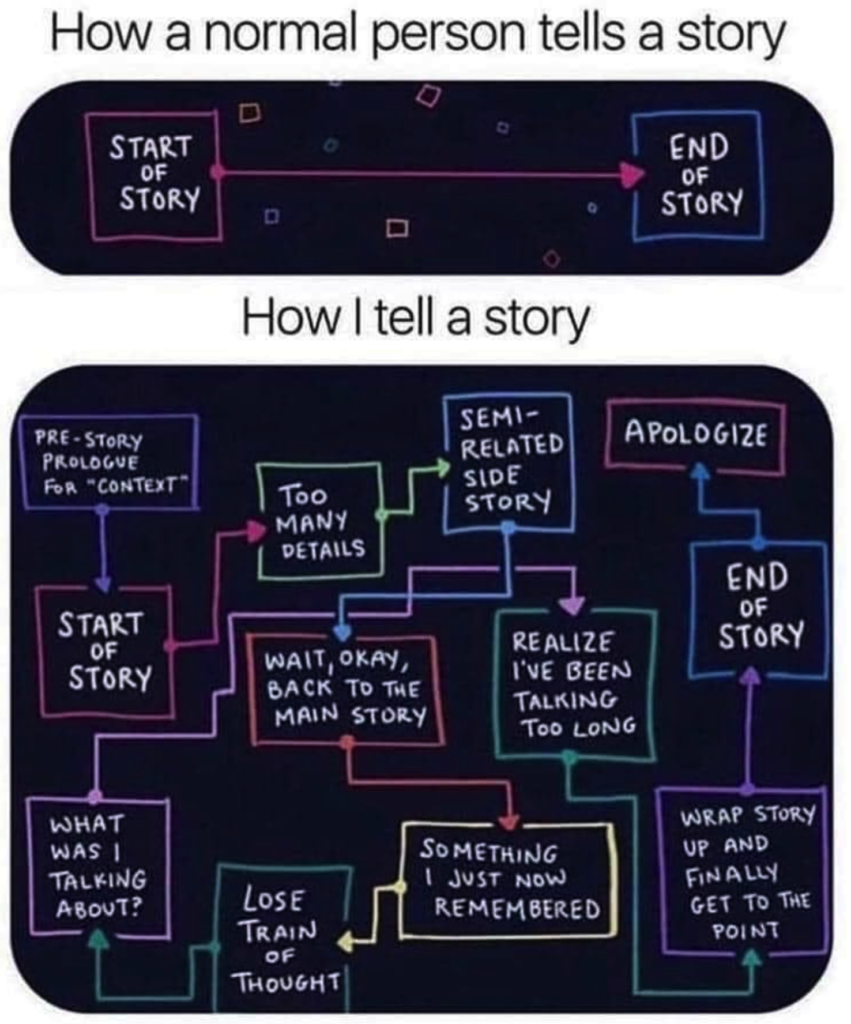

The human brain craves order to the extent it will manufacture order when no order exists.
Have you ever been driving and seen an outline on the road ahead? Your heart hitches because you’re certain some poor critter ended up under the wheels of a passing car.
Yet, when you get closer, you let out a sigh of relief because it’s just a rumpled pile of fabric. Someone lost a jacket. WHEW!
This is our brain seeing an outline and configuring the shape into something that makes sense given the context of dim lighting, road, and driving.
It’s also how people see pictures in clouds, whorls of wood, or how some see Jesus on a slice of toast.
MY Jesus is gluten-free 😀 .
Okay, don’t shout me down! It’s still okay to LAUGH!
Anyway…
Anything too chaotic from a website with too many flashy ads to a remote control with too many buttons turns most people off. Humans have a primal desire for cohesion and congruity, which is where narrative style becomes important.
Writers can harness narrative style to imbibe order that not only makes sense for the material, but that hooks readers into wanting to know/read more.


Me (as an author) simply sitting down and writing a chronological account of every weird, bad, tragic, or interesting event in my life as I remember it could technically count as a memoir.
Yet, as I chastise those who write novels, there is a BIG difference between authentic drama and “bad stuff happening.” Memoirs don’t get a pass.
Who wants to read 55K+ words of a ‘story’ that reads like a police report, or is too reminiscent of that family member who can’t stop relaying account after account of every time ‘someone done her wrong?’ Or that sounds like the coworker who name-drops and brags all the time?
Structure (Hero’s Journey included) is the mortar that gives events cohesion. It offers a point to the conversation, whether this is a novel, a non-fiction, or a memoir.
There are many options for structure, and structure is a major component of narrative style.
Essential #2: Congruity
Narrative style needs to be congruent with the content, the ideal choice to deliver whatever story we want to tell.
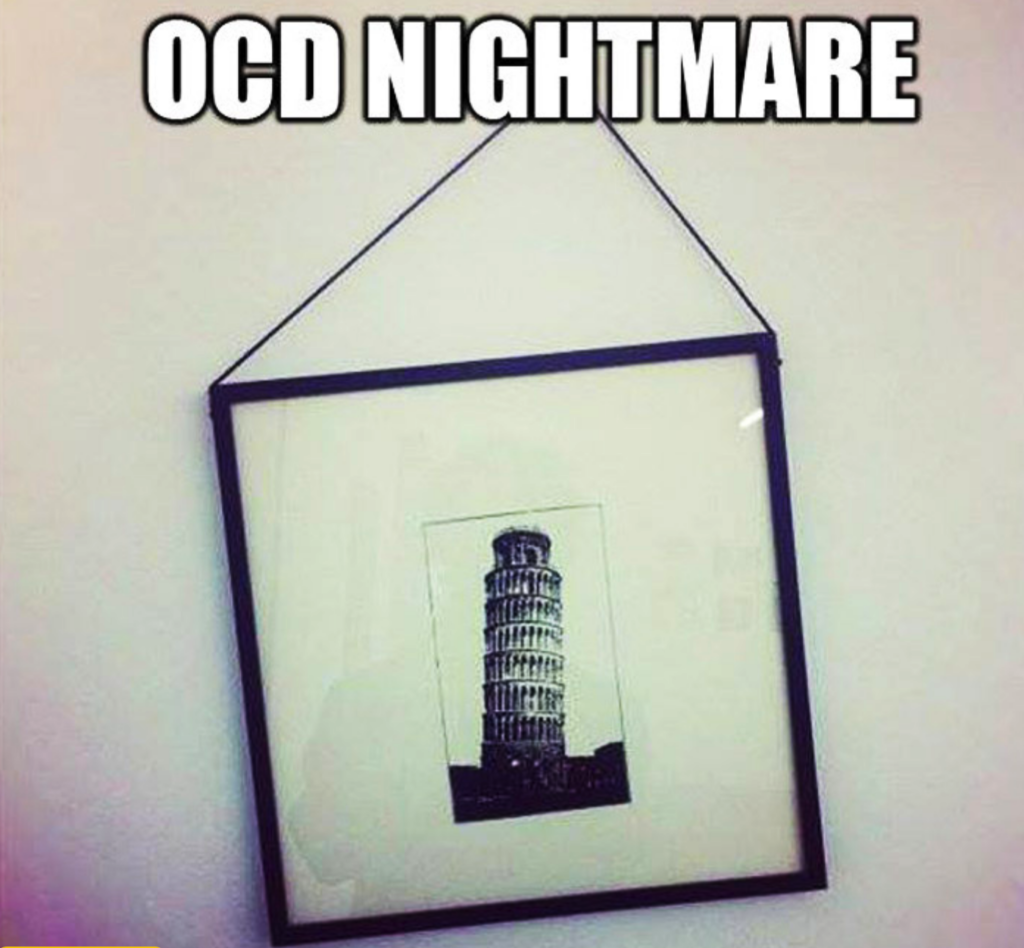

Narrative style can utterly change a story, sometimes for good, but sometimes not.
Remember Billy Mays? Talk about a famous voice. Great salesperson for Oxy Clean, but we might be horrified if a news anchor narrated pandemic statistics in the same style.
Why? Because the narrative style wouldn’t be congruent with the content (unless one is writing a dark…very dark comedy/satire or dystopian).
Speaking of horror, College Humor posted a skit where comedian Gilbert Gottfried narrated the audio version of 50 Shades of Grey. The narrative style incongruity is divergent to the point of being hysterical (or horrifying). Though morbidly funny, it’s definitely adult content so warning y’all ahead of time 😉 .
Remember that narrative style ideally should reflect your story (content) in the best way possible for maximum (desired) effect.
Essential #3: Audience
Writing is always, always for the audience. Anything else is a journal or diary entry…just for you.
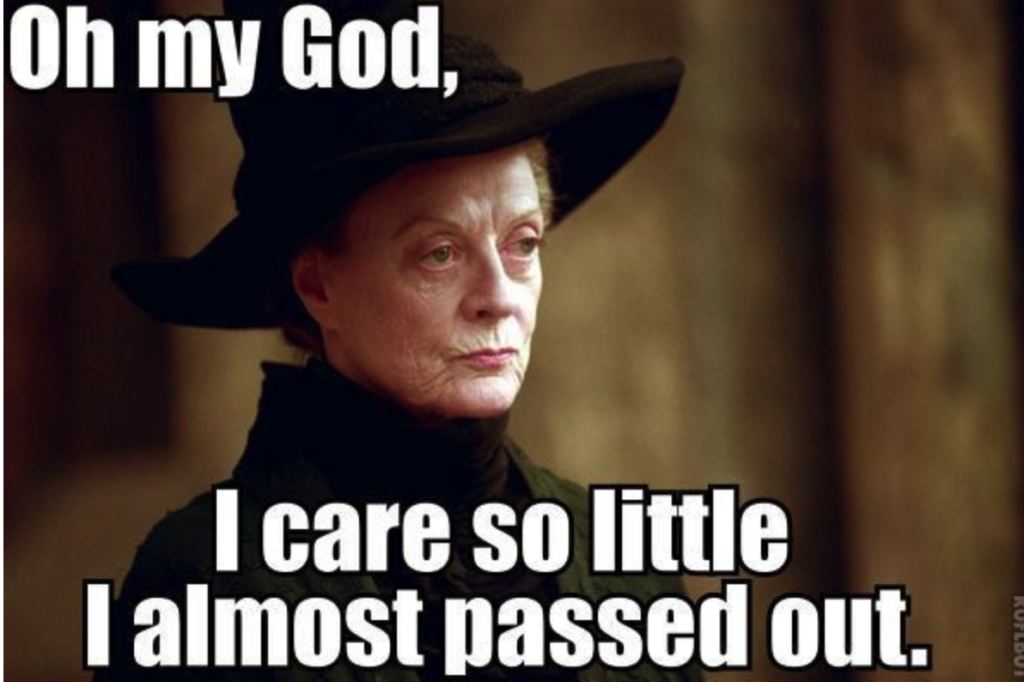

I had some comments last post about this, and I hear you. As a teacher/writing instructor/editor, I get a TON of pushback on this point, too. Writers get really upset when I tell them that they’re writing for an audience of one.
***This happens a lot in science fiction and fantasy. The author falls in love with, say, the world-building. Tragically, they’re the only person who understands their world. When telling the story, they forgot to include the reader.
Right now, I’m finishing up a ghostwriting project (which is part but not all of why I’ve been remiss posting).
For me, the single hardest part of the ghostwriting process was identifying the best narrative style for the story my client wants to tell, then refining that style for the book’s potential audience. Since my client’s goals are to change hearts, minds, and hopefully laws with this material, we want the audience to ideally be as large and diverse as possible.
Finding the perfect delivery system was no simple task.


The book is about an extremely volatile, painful, and potentially polarizing subject. How could we relay the story in a way that didn’t overwhelm, confuse, depress, turn off, anger, or alienate the audience yet STILL preserve my client’s personality?
Because once the book is published, my client will likely be talking about the book and it should SOUND like my client.
And yet…
BECAUSE the topic is so controversial, I kept having to remind my client that the book (which is pseudo memoir/non-fiction) is ultimately FOR THE READERSHIP. Granted, it IS my client’s story/life/experience, but my job is to remind my client why it is vital to set aside ego.
There needs to be a give and take. Narrative style is an incredible tool to accomplish this balance.
If delivery is too strident/dogmatic, then a) we craft a book only my client and close associations want to buy/read, b) we end up with an ideological echo chamber c) we shut down the very minds we’re seeking to change.
Narrative style helps us walk that tightrope between an empowered person who’s overcome tremendous odds versus a pity party “poor me” tale.
Victim or victor is all in the way the story is told.
What IS Narrative Style?
If this were easy to define, then we wouldn’t have dozens of articles, books and classes to demystify the concept.
Today, I’ll put in my two cents and see if I can help some light bulbs go off.
Narrative style is—in its essence—that uniqueness that we as artists bring to the story. Remember, humans relied on an oral tradition for tens of thousands of years. We are a story people. Narrative style, in my opinion, is a holdover from that oral tradition.
HOW did a certain person tell a story?
I don’t care what anyone says, storytellers are the oldest profession 😉 .
Authors as Directors


Whenever we watch a movie, certain directors seem to stand apart. It’s easy to spot a Quentin Tarantino or a Francis Ford Coppola movie just from the style. What film is used, the light, the shots, what’s included, what isn’t.
Are the scenes in chronological order? Or does the story loop back and forth in time?
Narrative style is a close cousin to cinematic style, only we use words to paint a story instead of images/film. For instance, Ernest Hemingway became famous for his economy of words when his peers at the time lived by the mantra, ‘No modifier left behind.’
It’s fairly simple to decipher Hemingway’s work from Faulkner with a glance at a page or two.
William Faulkner included expansive details, used long luxurious prose, and wrote sentences that could span over half a page. Hemingway, on the other hand? Brevity to the point of being almost sterile.
Stephen King will still say in thirty words what probably could have been said in five, but it doesn’t matter because his fans love his particular narrative style. If readers had wanted him to write leaner, they’d have penalized him in the 80’s before he ever became a household name.
But what about narrative style in a memoir?


This can be a sticky wicket, depending on the memoir’s theme or focus. Obviously, a memoir is our story so narrative style should be simple, right?
Right.
If we’re relaying painful events, we risk becoming overemotional which might unravel the story’s cohesion. We could degrade into ranting or rambling.
Then there’s the flip side.
When we’re hurt, humans are known to compartmentalize out of self-preservation. Thus, our narrative voice could career over to the opposite end of the spectrum. We might sound robotic, sterile, or emotionally distant. Our story fails to resonate because the audience has better odds of emotionally bonding with a weather report.
If we’re writing a memoir to talk about fantastic adventures? Great! Yet, the narrative style again needs to walk that tightrope. We want a sense of inclusion, invitation, and for others to come along for the adventure.
Ideally, we could strive to convey enthusiasm and a healthy dose of humility lest we sound like a self-congratulatory committee of one.
Narrative Style & Empathy
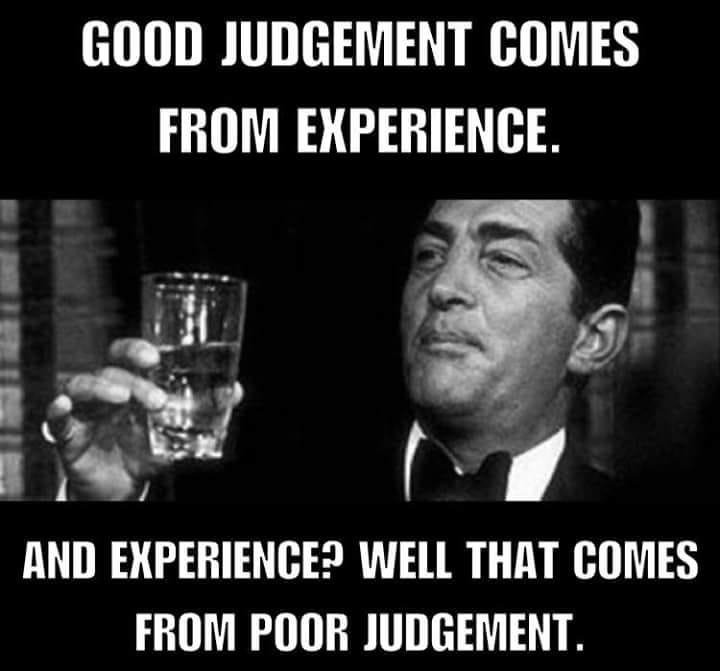

A HUGE part of narrative style is our ability to empathize. The more we study the human condition, the easier we can get in the head of a character(s). Once this is accomplished, narrative style almost reveals itself.
When writing memoir, self-awareness is key. We all have wounds and wounds make great memoir material. But wounds can also create HUGE blind spots…which can mean a masterpiece or a mess.
To bypass these pitfalls, it’s a good idea to ask ourselves why we’re sharing these scars? What does our story have to offer a reading audience? What will others gain from us relaying our hurts, trials, or even our successes?
When we know WHY we’re telling our story and HOW we want the audience to FEEL, it’s then far simpler to narrow down and select the best narrative style.
It’s even easier if we have a well-stocked narrative cupboard to draw from.
Can we think of fictional characters that remind us of ourselves, that SOUND like us, then use them for inspiration? Are there authors with a narrative style that we can draw from and make uniquely ours? Can we cobble together elements of various styles?
Ironically, this is why reading fiction is so vital. By reading good fiction, we are essentially studying people through the lens of stories. Fiction is also fantastic for helping us strengthen self-awareness, which is why fiction can even help the memoir author.
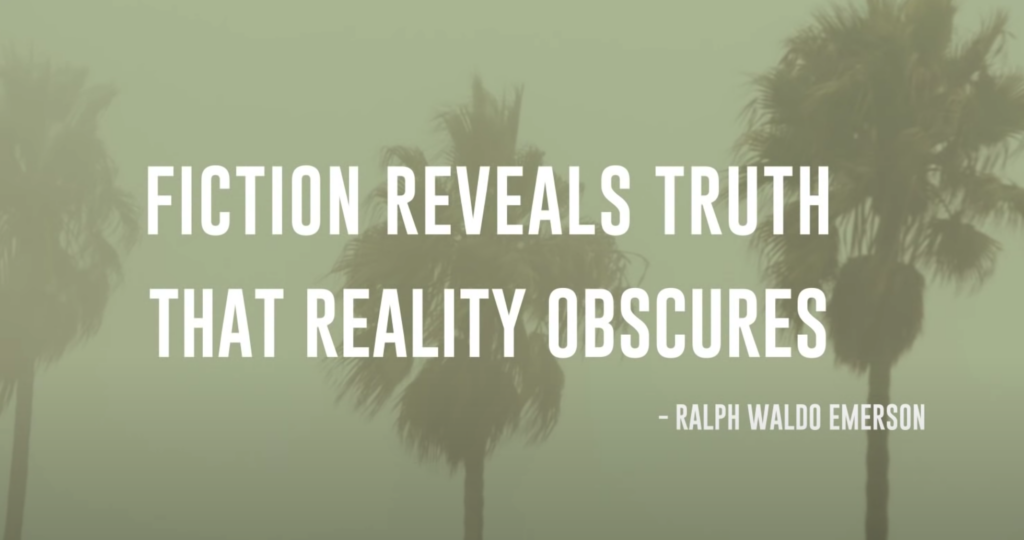

Writers who read a lot of fiction are simply better at playing different parts and being convincing. They’re masterful at captivating an audience.
Reading a lot of fiction trains our narrator muscles, fills our creative reservoirs with a wellspring of options to parse and reconfigure and make into our own. Musicians do this all the time.
This is probably best exemplified in one of my all time favorite novels, Joe Hill’s Heart-Shaped Box which is a story about a heavy metal rock star forced to face his painful past when, on a whim, he unwittingly purchases a vengeful ghost.
Jude Coin, the MC, while on the run from the spirit determined to destroy him, takes a moment to work on a song that’s been simmering in the back of his mind. The description here is the perfect example of what we do when we search for the ideal narrative style.
Narrative Style & Heart-Shaped Box
Jude Coin:
The song itself might have been a traditional hill-country melody, sounded like something that belonged on a Folkways record or a Library of Congress retrospective of traditional music. Something with a name like “Fixin’ to Dig My Grave.” “Jesus Brung His Chariot.” “Drink to the Devil.”
“Drink to the Dead,” he said.
...The sound of it—the sound of the Ozarks, of gospel—gave him a little prickle of pleasure.
…A lot of his songs, when they started out, sounded like old music. They arrived on his doorstep, wandering orphans, the lost children of large and venerable music families. They came to him in the form of Tin Pan Alley sing-alongs, honky-tonk blues, Dust Bowl plaints, lost Chuck Berry riffs.
Jude dressed them in black and taught them to scream.
Heart-Shaped Box, Joe Hill, page 154
Good writers are artists as well. The more we read, study, learn and listen, the deeper and more resonant our work becomes. Like in my above example, Jude Coin might sing hard core heavy metal, but he adds depth and texture to his songs by being unafraid to weave in vastly different varieties of music. Doing this, he forms something new and wholly original.
Narrative style works in much the same way.
In the end, we can draw from personal experience, then marry those experiences with a narrative style that serves the story and the audience.
What are Your Thoughts? I LOVE Hearing from You!
I hope you see how narrative style is critical in all forms of writing, even in memoir. Maybe especially in memoir. My apologies for being remiss posting. To be brief, I live in Texas. We had a bad storm and our house suffered a major lightning strike that did some pretty bad damage and wreaked massive havoc.
Didn’t burn the place down, thank GOD. But made a GIANT mess out of life in general, especially since I was still working on this ghostwriting project.
I had to buy a new computer. We were without a refrigerator for two weeks while the repair company ordered a circuit board to replace the fried one. Also had the JOY of replacing most of the AC/heating unit. Fun times. I could write a MEMOIR about it 😀 …or not.
But a month and $12,000 in repairs and replacements later…I’m baaack 😀 . Not getting rid of me so easily. HA!
Here we are *catching breath* so thoughts? Comments? Any ideas why my laundry has cloning technology it is willing to share with the dishes and not ME? Have any ideas for classes you’d like me to offer?
Hey, I have missed y’all!
